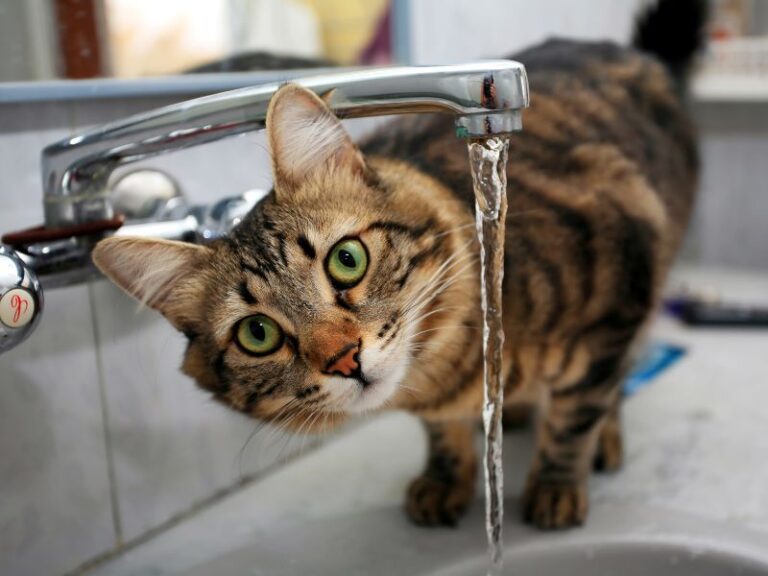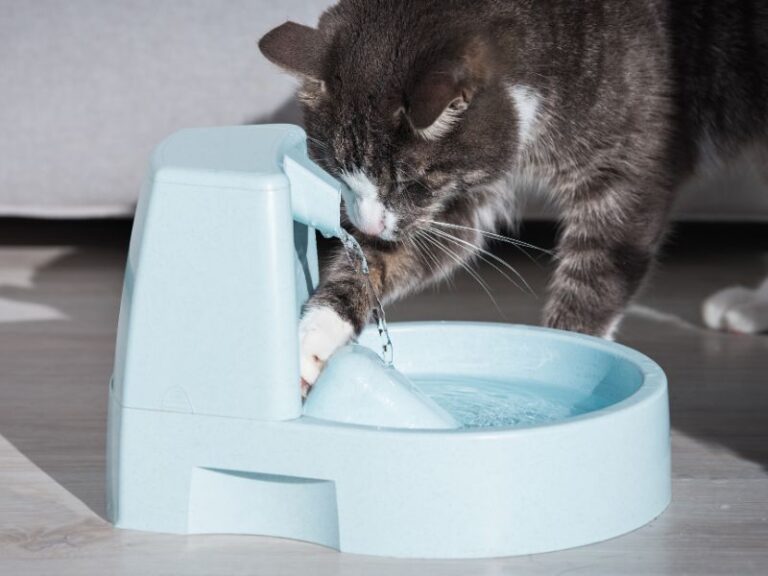Table of Contents
ToggleIf you’re a cat owner, you know that our feline companions hold a special place in our hearts. We cherish their playful antics, comforting purrs, and the companionship they offer. Yet, when it comes to ensuring their well-being, one of the most crucial decisions we make is often overlooked – changing cat food.
The diet you provide for your cat plays a pivotal role in their overall health and longevity. It’s not just about filling their bowl; it’s about offering them the right balance of nutrients to thrive. In this article, we’ll delve into the importance of switching cat food and how this seemingly simple decision can make a world of difference in your cat’s life.
Signs It’s Time to Switch
Our feline friends have their unique ways of communicating with us, and sometimes, their bodies send clear signals when their current diet isn’t quite right. Recognizing these signs is essential to determine if it’s time to consider changing cat food. Here are some common indicators that your cat may benefit from a dietary change:
- Digestive Upsets: Frequent digestive issues like diarrhea, vomiting, or constipation can signal a problem with your cat’s current food. These issues may suggest that the ingredients in their diet don’t agree with them.
- Unexplained Weight Changes: Rapid weight loss or gain without an apparent cause could be linked to their diet. A sudden drop in weight might indicate a lack of essential nutrients, while unexplained weight gain might signal an excessive calorie intake.
- Dull Coat and Skin Problems: A cat’s coat should be lustrous and its skin supple. If you notice a dull, dry coat, or persistent skin irritations, it could be due to a deficiency in their diet.
- Allergies or Sensitivities: Cats, like humans, can develop allergies or sensitivities to certain ingredients in their food. Common allergens include grains, proteins, or artificial additives. Signs may include itching, sneezing, or gastrointestinal discomfort.
- Loss of Appetite: If your cat suddenly loses interest in their food or stops eating altogether, it’s a clear sign that something isn’t right. Cats are known for their finicky eating habits, but a complete loss of appetite should be investigated.
- Change in Behavior: Cats are creatures of habit, and a sudden change in behavior, such as increased irritability or lethargy, might be linked to discomfort caused by their diet.
- Age and Life Stage: As cats age, their nutritional needs change. What was suitable for a kitten may not be adequate for a senior cat. Ensure your cat’s food aligns with their life stage.
- Bad Breath and Dental Issues: Poor-quality cat food can lead to dental problems and bad breath. If you notice issues with your cat’s teeth or persistent foul breath, diet might be a contributing factor.
Preparing for the Transition
Switching Cat Food: Smoothly Navigating the Change
Transitioning your cat to a new food is a delicate process that requires thoughtful planning. A sudden switch can upset your cat’s digestive system, leading to discomfort and resistance. To make the transition as seamless as possible, follow these practical tips:
- Gradual Transition: The key to success is a slow and gradual change. Start by mixing a small amount of the new food with the old food. Over the course of a week or two, gradually increase the ratio of the new food while decreasing the old food. This allows your cat’s digestive system to adjust gradually.
- Observe Preferences: Pay attention to your cat’s preferences. Some cats may be more resistant to change, while others adapt quickly. If your cat consistently avoids the new food, try different flavors or formulations until you find one they enjoy.
- Consult Your Vet: Before switching cat food, consult your veterinarian. They can provide recommendations based on your cat’s specific needs, such as any health conditions or dietary restrictions.
- Read Labels: When selecting the new cat food, carefully read the labels. Look for products that meet your cat’s nutritional requirements. High-quality, balanced diets are essential for your cat’s health.
- Maintain Consistency: Try to maintain a consistent feeding schedule throughout the transition. Cats thrive on routines, so sticking to regular meal times can reduce stress.
- Hydration: Ensure your cat has access to fresh water at all times, especially during the transition. Proper hydration is essential for overall health and digestion.
- Monitor for Changes: Keep a close eye on your cat during the transition. Monitor their litter box habits, appetite, and behavior. Any sudden and severe changes should be discussed with your vet.
- Patience and Positive Reinforcement: Be patient with your cat during this process. Positive reinforcement, such as praise and treats, can help create a positive association with the new food.
Choosing the Right Cat Food
Finding the Perfect Match: Catering to Your Cat’s Unique Needs
Selecting the right cat food is akin to choosing a tailored suit—it should fit perfectly. When it comes to changing cat food, consider these vital factors to ensure you’re meeting your feline friend’s specific needs:
- Age Matters: Cats have different nutritional requirements at various stages of life. Kittens, adults, and seniors each have unique needs. For kittens, look for foods rich in protein and essential nutrients to support growth. Adult cats thrive on balanced diets, while seniors may require foods tailored to support aging joints and overall health.
- Read the Labels: The ingredient list and nutritional information on cat food labels are your best friends. Look for high-quality protein sources as the main ingredient, such as chicken or fish. Avoid foods with excessive fillers like corn or wheat.
- Dietary Restrictions: If your cat has dietary restrictions or allergies, be vigilant about ingredient labels. Some cats may have sensitivities to certain proteins or grains. Grain-free options or specialized diets can address these issues.
- Wet vs. Dry Food: Both wet and dry cat food have their advantages. Wet food provides hydration and can be easier for cats with dental issues. Dry food is convenient and can help maintain dental health. Combining both can offer a balanced diet.
- Consult Your Vet: Your veterinarian is an invaluable resource in selecting the right cat food. They can recommend brands and formulations tailored to your cat’s specific health needs.
- Preferences: Cats have taste preferences too! Pay attention to your cat’s likes and dislikes. Experiment with different flavors and textures to find a food they enjoy.
- Avoid Artificial Additives: Opt for cat food that is free from artificial colors, flavors, and preservatives. Natural ingredients contribute to a healthier diet.
- Consider Your Budget: While quality matters, consider your budget. There are high-quality cat foods available at various price points. Invest in the best food you can afford within your budget.
- Gradual Transition: If possible, try to match the new food with the old in terms of flavor or formulation. A smoother transition is more likely if the food is similar to what your cat is used to.
Read More >>> The Difference Between Organic and Natural Cat Food
The Transition Process
Guiding Your Cat Through a Seamless Dietary Shift
Now that you’ve chosen the right cat food, it’s time to embark on the journey of switching cat food without causing unnecessary stress for your feline friend. Follow these essential steps for a smooth transition:
Begin Mixing
- Start by mixing a small amount of the new cat food with the current food. Begin with a ratio of 75% old food to 25% new food.
- Observe your cat’s reaction. Most cats will accept this gradual change without fuss.
Adjust the Ratio
- Gradually increase the proportion of new food while decreasing the old food. Aim for a 50-50 split by the end of the second week.
- Continue monitoring your cat’s response. Look for any signs of digestive upset or reluctance to eat.
Mostly New Food
- In the third week, shift the ratio to about 25% old food and 75% new food. You’re getting closer to a full transition.
- Keep an eye on your cat’s appetite and behavior. At this point, most cats should be adapting well to the new diet.
Full Transition
- By the fourth week, your cat should be comfortably eating the new food without any issues. You can now feed them exclusively with the new cat food.
- Ensure they have access to fresh water at all times to aid digestion and hydration.
Monitor Closely
- Throughout the transition process, closely monitor your cat’s health, behavior, and appetite. Look for any signs of discomfort or digestive problems.
- If you notice any issues, consider slowing down the transition or consulting your veterinarian for guidance.
Patience is Key
- Remember, every cat is unique. Some may adapt quickly, while others may need more time. Be patient and adjust the pace of the transition as needed.
Positive Reinforcement
- Offer praise and treats when your cat willingly eats the new food. This positive reinforcement can help create a positive association with the new diet.
Consistency
- Once your cat has fully transitioned to the new food, maintain a consistent feeding schedule to provide them with a sense of routine.
By following this gradual transition process, you can minimize the chances of digestive upset and make changing cat food a positive experience for your beloved pet. Always prioritize your cat’s well-being and ensure they receive the best nutrition possible.
Potential Challenges and Solutions
Navigating Hurdles While Changing Cat Food
Transitioning your cat to a new food isn’t always smooth sailing. Cats can be finicky eaters, and change can sometimes bring challenges. Here are some common issues you might encounter during the switching cat food process and how to overcome them:
1. Refusal to Eat the New Food:
- Solution: If your cat outright refuses the new food, try different flavors or formulations within the same brand. Patience is key; sometimes, it takes a bit of experimentation to find the right match.
2. Digestive Upsets:
- Solution: If your cat experiences diarrhea or vomiting, slow down the transition process. Return to the previous ratio of old food to new food until their stomach settles, then proceed more gradually.
3. Picky Eating Habits:
- Solution: Cats are known for their selective tastes. To encourage acceptance, mix a small amount of wet food with the new dry food, or try sprinkling a little catnip on top.
4. Allergic Reactions:
- Solution: If your cat exhibits signs of allergies, such as itching or sneezing, consult your veterinarian immediately. They can help identify the allergen and recommend an appropriate diet.
5. Inadequate Hydration:
- Solution: Cats can be prone to urinary issues, so ensure your cat is drinking enough water during the transition. Wet food can help increase their water intake.
6. Behavioral Changes:
- Solution: Some cats may exhibit behavioral changes during the transition, such as increased irritability or hiding. Reassure your cat with gentle petting and play to reduce stress.
7. Weight Loss or Gain:
- Solution: If your cat experiences sudden weight loss or gain, consult your veterinarian. Adjust the portions of the new food accordingly to reach the ideal weight.
8. Slow Transition:
- Solution: If your cat requires an even slower transition than the four-week guideline, don’t hesitate to extend the process. Each cat is unique, and their comfort should be a priority.
9. Seek Veterinary Guidance:
- Solution: If challenges persist or worsen, consult your veterinarian. They can provide tailored advice and may recommend a prescription diet if necessary.
Monitoring Your Cat’s Health
The Watchful Eye: Safeguarding Your Cat’s Well-Being During Transition
While switching cat food is essential for your cat’s health, it’s equally crucial to monitor their well-being throughout the process. Here’s why it’s important and how to do it:
1. Importance of Monitoring:
- Transitioning to a new cat food can impact your cat’s health in various ways, from digestion to energy levels. Monitoring allows you to catch and address any issues promptly.
2. Positive Changes:
- Look for signs of improvement such as a shinier coat, increased energy, and better digestion. These indicate that the new food suits your cat’s needs.
3. Appetite and Hydration:
- Ensure your cat maintains a healthy appetite and drinks an adequate amount of water. A good appetite suggests they are adjusting well to the new food.
4. Litter Box Habits:
- Keep an eye on your cat’s litter box habits. Changes in the frequency, consistency, or color of their stool or urine can be indicators of potential issues.
5. Skin and Coat Condition:
- A healthier diet often leads to improved skin and coat condition. Look for a shinier coat, reduced dandruff, and a decrease in skin irritations.
6. Weight Management:
- Monitor your cat’s weight to ensure they are maintaining a healthy size. Sudden weight loss or gain can be a sign that the new food isn’t agreeing with them.
7. Behavior and Energy Levels:
- Pay attention to changes in behavior and energy levels. A happier, more active cat is a positive sign that the new food is working for them.
8. Potential Concerns:
- Be alert to potential concerns such as prolonged digestive issues, refusal to eat, excessive thirst, or behavioral changes. These may require veterinary attention.
9. Gradual Adjustments:
- Understand that it may take some time for your cat to fully adapt to the new food. Be patient and allow them to settle into their new diet.
10. Veterinary Consultation:
- If you notice any concerning changes in your cat’s health or behavior during the transition, consult your veterinarian. They can provide guidance and ensure your cat’s health is on track.
Final Words
In the journey of feline companionship, we’ve explored a crucial aspect: changing cat food. This seemingly simple decision carries profound implications for your cat’s well-being. Throughout this article, we’ve uncovered essential insights to guide you through this transition.
The signs indicating it’s time for a change, the careful preparations needed, and selecting the right cat food tailored to your cat’s age, dietary requirements, and preferences are all part of the puzzle. We’ve also explored the step-by-step process of transitioning, addressing potential challenges, and the vital role of monitoring your cat’s health.
In conclusion, the benefits of changing cat food extend far beyond the surface. It’s about providing your beloved feline companion with the best possible nutrition, ensuring they lead healthy, vibrant lives. A well-thought-out transition can lead to a shinier coat, improved digestion, increased energy, and a happier, healthier cat overall.
Remember that patience, attentiveness, and a genuine concern for your cat’s well-being are your greatest allies in this endeavor. By making informed choices and prioritizing your cat’s unique needs, you’re not only enhancing their quality of life but also strengthening the bond you share.
So, embrace the change, monitor their progress, and watch as your cat thrives with the benefits of changing cat food—a testament to your love and commitment to their happiness.






